SOUTH AFRICA
Population

Population

Cities in SOUTH AFRICA
| Cape town | Johannesburg |
Population
The population of South Africa increased more than sevenfold between 1911 and 2000 from over 6 million to 43.5 million. In 2024, there are 64 million people. The population increase averaged 1% from 2000 to 2014 (1.07% in 2024). In 2024, 80.9% of the population are black, 7.8% white, 8.8% colored, and 2.6% Indian. Other groups are marginal.
In the period 1985 to 2017, the number of blacks increased and the number of whites decreased. Blacks also include the inhabitants of the homelands Bophuthatswana, Ciskei, Transkei and Venda.
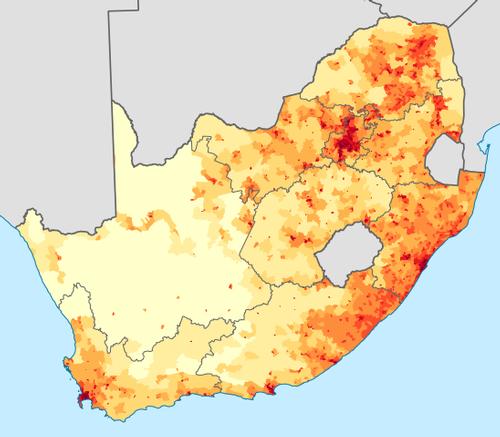 Population density South AfricaPhoto: I, Htonl in the public domain
Population density South AfricaPhoto: I, Htonl in the public domain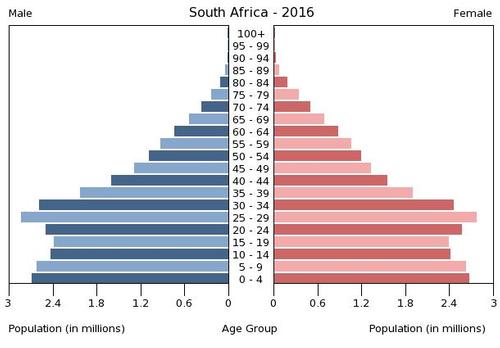 Population structure South AfricaPhoto: Central Intelligence Agency in the public domain
Population structure South AfricaPhoto: Central Intelligence Agency in the public domain
The average lifespan of white South Africans is considerably higher than that of their black compatriots. The average lifespan of all men and women is 70.3 and 73.5 years, respectively. (2024)
Bantu peoples spread south from Central Africa some 2,000 years ago. Its descendants make up the black population of present-day South Africa. However, it is a very heterogeneous group with its own languages, customs, house building, etc.
The black population consists of nine ethnic groups (nations). The white government used this classification when geographically distributing the ethnic groups across the home countries. The largest group are the Zulus, followed by the Xhosas, the North Sothos, the South Sothos, the Tswana's, Shaanaan-Tsonga's, Swazi's, South Ndebele, North Ndebele, Venda's and others.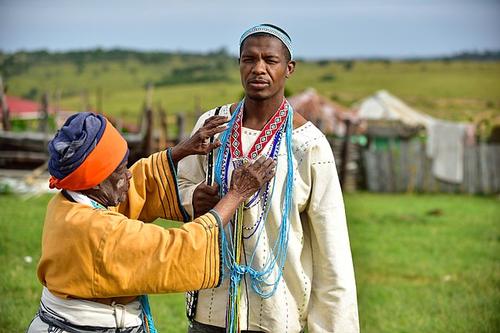 Xhosa, South AfricaPhoto: South African Tourism CC 2.0 Generic no changes made
Xhosa, South AfricaPhoto: South African Tourism CC 2.0 Generic no changes made
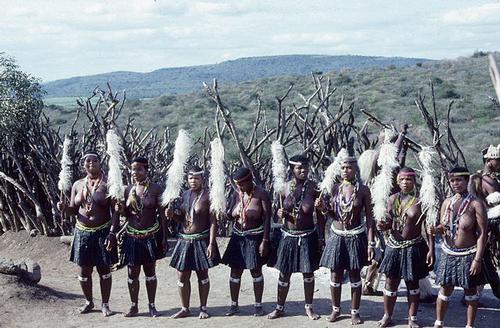 Zulus in traditional clothing, South AfricaPhoto: Jean-Claude Hanon CC 3.0 Unported no changes made
Zulus in traditional clothing, South AfricaPhoto: Jean-Claude Hanon CC 3.0 Unported no changes made
Millions of blacks live in the "townships" or "shantytowns", residential areas for the black population on the outskirts of major cities, but the exact number is impossible to determine. People often live in slums and shortages of real houses are estimated at three million. Well-known townships are Soweto near Johannesburg, Mamelody near Pretoria and Crossroads near Cape Town. Each "nation" is divided into a number of tribes or "tribes". The Zulus, for example, consist of more than 200 tribes.
The white population had more than 5 million souls in 1993. It consists of the descendants of Dutch, French and German settlers, the descendants of British settlers and immigrants from Southern and Eastern Europe who came in the 20th century. Often a distinction is made between the Afrikaners (approx. 57% mainly in the Transvaal province and in Free State), consisting of the descendants of the oldest groups of settlers, and the English speakers (approx. 38% mainly in the Cape Province and KwaZulu / Natal). The other five percent are immigrants who came to South Africa in the 20th century.
A very large proportion of colored people live in the Cape Province. The colored people are descendants of Hottentots mixed with white settlers, blacks and slaves from the Middle East. In 1959 this population group was divided into Cape colored people, Cape Malayans, Griqua (mixture of Hottentots and Europeans from the northeast and northwest of the Cape Province), Chinese, "other Asians" and "other colored people". In 1967 this classification was partially revoked. In practice, descent became a more important criterion than appearance. The colored community is divided in terms of politics and culture: some seek connections with the whites, others feel more affinity with the blacks.
99% of the Asians are of Indian descent. Most of the nearly one million Indians live in Natal and are descendants of indentured servants who came to South Africa from what was then British India in the 19th century. In addition, about 12,000 Chinese have emigrated to South Africa since 1920. Africa's largest Indian community lives in and around Durban.
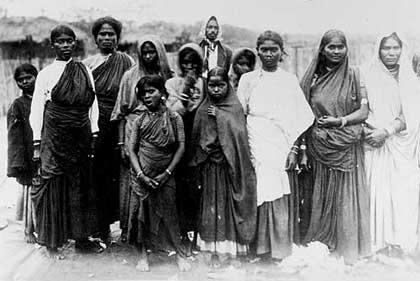 Female wool washers from India (19th century), South AfricaPhoto: Public domain
Female wool washers from India (19th century), South AfricaPhoto: Public domain
The population distribution is uneven. Large parts of the country are almost empty because the desert-like regions, where no minerals are found, remain virtually uninhabited.
In 2024, more than 68.8% of the population lived in urban areas. The fastest growing urban area is Cape Town and its environs, in which more than 4.9 million people lived in 2017. Other major agglomerations are: Johannesburg / Soweto / Alexandra (approx. 10.3 million); Durban / Inanda / Kwamashu (approx. 3.3 million); Pretoria / Mamelodi / Soshanguve (approx.2.8 million).
Sources
Dekker, M. / Zuid-Afrika
Gottmer/Becht
Luirink, B. / Zuid-Afrika : mensen, politiek, economie, cultuur, milieu
Koninklijk Instituut voor de Tropen,
Moerkamp, J. / Zuid-Afrika
ANWB
Schaap, D. / Zuid-Afrika
Minbuza Kosmos-Z&K
Zuid-Afrika
Cambium
CIA - World Factbook
BBC - Country Profiles
Last updated June 2025Copyright: Team The World of Info